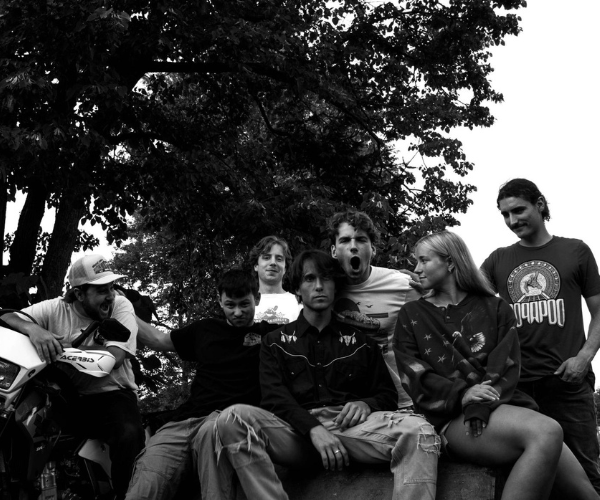It's 6 degrees at Brandywine inthe Cuyahoga Valley National Park with the windchill factor. The frigid February weather is making up for two months of mild, snowfreedays with a vengeance. The popularski and snowboarding destination is already bustling at 9 a.m. when I arrive, andthe parking lot is filling up fast. But my reason for coming has nothing to do withwinter sports.
This is jurying weekend for the 2007 Boston Mills Artfest. Judges will spendeight hours sequestered inside the Lodge looking at applicants' slides and decidingwho gets in and who does not. Without them, the 36th annual Artfest is nothingmore than dates on the calendar. By the time they're done, the jurors will havehelped create one of the premier outdoorart-and-craft shows in the country. There are two separate panels with five memberseach, plus an alternate. One group meets Saturday to focus on crafts, the other on Sunday for fine arts. I've been invited towatch the process from the sidelines.
Some of the judges are new to the task,others have done it before. All are workingartists and craftspeople themselves, manyfestival award winners from previousyears, and each bring a particular expertiseto the job of choosing the most qualifiedexhibitors for every category.
They've braved threatening skies and icyroads to get here, some from as far awayas Michigan and North Carolina. To show his appreciation and get the morning startedon a positive note, Ron Beahn, Artfest director and jury foreman, has hot coffeeand fresh doughnuts waiting for them.
Jurors receive a small honorarium andare reimbursed for their travel expenses, but Beahn feels their contributions far exceed their compensation. So he begins each session by thanking them for participating.
"We know you're taking time away from your own studios to help us, and we appreciateit," he says. "You play an essentialrole. The shows don't exist until you makeyour selections from among hundreds of applicants.
"To do that they sit at a long table in aroom outfitted with multiple slide projectorsand a huge 12-foot-by-8-foot screen,made from sheets of plasterboard. Jurors will view six slides submitted by each applicantsimultaneously five representingthe type of pieces they plan to showand one of their display booth.
They will look at all the slides in a specificcategory three times. The first runthrough is meant to provide a quick impressionof the artist's work and a sense ofthe overall caliber of the entries. There's no discussion, and the room is quiet exceptfor the occasional "oooh," "aaah" and"wow" responses to particularly beautifulor impressive entries.
Voting takes place on the second round. There's a four-point scoring system: zerois the lowest, four is the highest. There is no number two - Ron calls that "sitting on the fence," and he wants people to bemore decisive in their responses. Scoring is done independently. No juror knows howthe others have voted. Before moving onto the next set of slides, Beahn announces the vote tally. At this point, only a number identifies artists.
I notice that there's often a high level of agreement among the members of thejury. The best stuff is easy to recognize, asis the less proficient. Work that falls some where in between prompts the widestrange of opinion.
The third time through is for discussion,and Beahn encourages jurors to speakhonestly and openly, paraphrasing theVegas adage, "What happens here, stays here." He reveals each artist's name and repeats his or her score, adding in extra points for those who won prizes or honorable mentions at last year's show. Those who've gotten a total of 15 to 20 pointsare accepted, those with 14 to 10 are puton standby, and anyone receiving 9 or lessis rejected. Panel members can ask questions, raise concerns, argue on behalf ofan applicant who didn't make the cut, and call for a revote.
On Saturday, for example, a juror whoworks in clay goes to bat for a ceramicist,explaining that the pieces demonstrate theuse of unusual techniques and real skill inexecution that's not apparent in the slides. Knowing this, jurors agree to vote again, and the artist moves from stand by statusto accepted.
They are also on the lookout for factoryproducers - individuals who aren't involved in creating work themselves from start to finish - and scammers who sendothers to the show in their place. Both are against Artfest rules, and if a jury member has any reason to suspect that an applicantis guilty of these offenses, this is the time toshare that information.
Artfest is actually two completely different shows that take place on consecutive weekends. Each features 160 exhibitors. Normally there are more than 800 applications to consider for the 320 spaces.This year there are fewer openings. Because of the flooding at the start of the June 2006 show, all exhibitors from that weekend were invited to participate this year, and 130 accepted the offer. This means there are fewer entries to judge, but even so, the jurors keep busy until noon on both days, break for a quick lunch and some friendly conversation, and then reconvene for three to four more hours of sitting in the dark, giving every entry their undivided attention.
All the jurors I talk with are enthusiasticabout Boston Mills' reliance on peer review,are honored to be on the panel, and take their responsibilities very seriously. They also agree that the biggest challengeis to put aside their personal preferences.They are not looking for what they like, but for work that demonstrates a masteryof the medium and unique voice.
"You can recognize talent and ability,"says Linda Chamberlain, who works inmixed media, "no matter what the subject."Deborah Fleck-Stabley, anothermixed-media artist, agrees. "You have toget beyond thinking, "'Would I want thisin my house?' As judges we are using ourtraining to identify ability and creativity. Iknow when something is good even if it'snot my style or taste.
"There are things I can't relate to,"sculptor Virgil Villers adds. "But I realizewe're trying to put together a show with a broad range of methods and approaches,so my criteria comes from the basic elements of design. I look for how well someone handles line, shape, color,space, texture and pattern. And of courseoriginality and consistency are importanttoo. The hardest part is making a decisionin a heartbeat."
Beahn asks jurors to submit a short reviewof their experience. Like his fellowjudges, jewelry artist Bill Lenhert feels theprocess is fair and equitable, calling it the"best system I've encountered in 30 years."In his summary, George Whitten, a painter,commented that the overall quality ofthe submissions was outstanding, and this made the jury's job very difficult. But all that competition, he added, makes for astrong show. Watercolorist Barney Colepredicted that the 2007 shows would be atreat for patrons.
The staff of Artfest thinks it is, and they're confident you'll agree. Much of the credit for that goes to those dedicated artists who showed up one freezing weekend six months ago.



